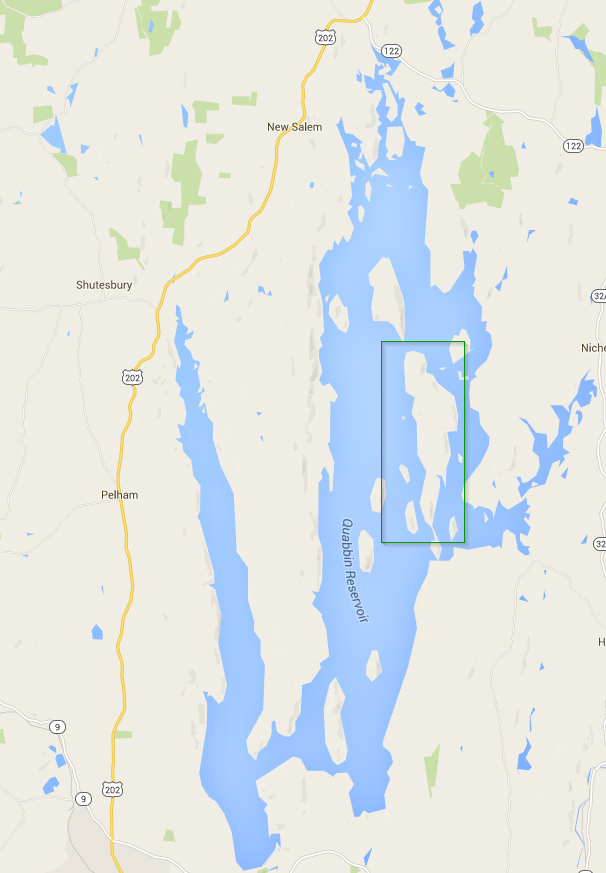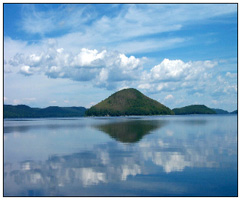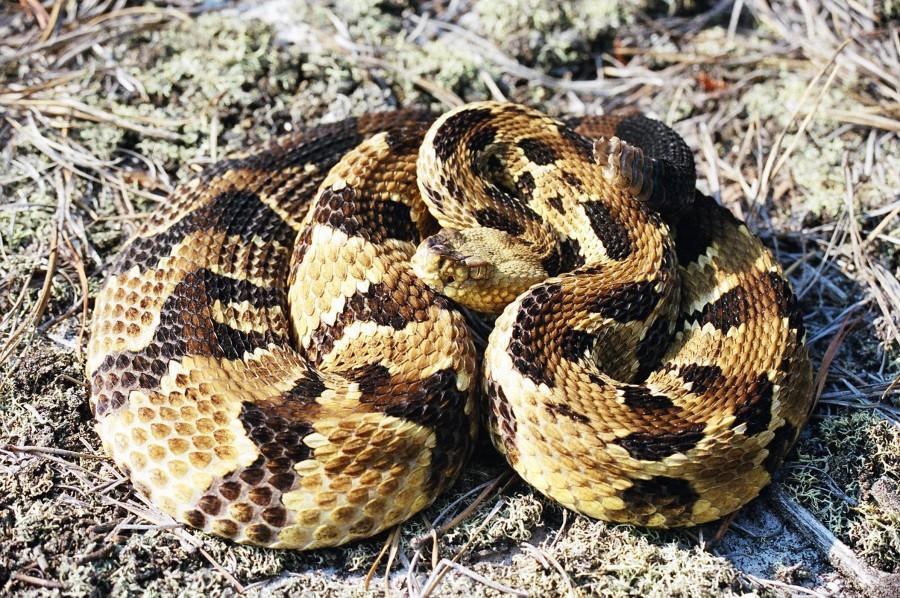Snakes at Quabbin?
April 12, 2016
Quabbin Reservoir was once a community consisting of four towns: Dana, Enfield, Greenwich and Prescott, but these towns were flooded to make a reservoir to provide eastern Massachusetts clean water. Just as there was controversy over flooding the four towns in the 1930s to create the reservoir, today there is now a new controversy surrounding Quabbin Reservoir, and it is making quite a ripple.
State wildlife officials want to populate Mount Zion, an island in the Quabbin Reservoir that is off limits to humans, with 150 venomous timber rattlesnakes. These rattlesnakes are largely considered to be one of the most dangerous snakes in North America due to their long fangs, their large size (35-60 inches), and their high venom yield. It is worth noting that these snakes are considered an endangered species in Massachusetts and other states, but more on that later.
I, for one, along with many other people are against this idea. Although I and many others are all for helping and saving any species, I don’t feel this is the right way to address this issue. Many disagree with many of the ways these officials are going about this repopulation.

First off, it needs to be noted that these state officials have repeatedly lied to the public about facts pertinent to this issue. The first one being that the officials said that the snakes will cause no harm or danger to humans because they will remain on the island, that they won’t ever leave the island, and seemingly would have no way to leave considering the island is surrounded by water. Seems plausible right? Nope, snakes, all snakes have the ability to swim, and will swim when issues arise, such as food running low, overpopulation, or simply just swim away from the island in search of a new home since they are free roaming animals. These state officials blatantly left out crucial information that they fully knew was true in hopes that the public would just look the other way. After much public backlash, they have admitted that it is plausible these snakes could swim off the island and come in contact with humans.
Second, and very similar to the first point, is that they have stated that even if the snakes do get off the island, they don’t cause any danger to humans. Officials said no one has been bitten by a rattlesnake around here in more than 200 years. False again. After this statement came out a handful of people came forward speaking about their encounters and bites with rattlesnakes in the area. Many others pointed out the aggression these snakes show when you go anywhere near them. The accounts of the people bitten all required them to go to the hospital where there are records of these snake bites, yet these officials just again don’t want the full truth to come out hoping the few cases wouldn’t be heard. But isn’t one case enough to throw up a red flag?
A recent report by state officials puts the estimated number of timber rattlesnakes at about 200 in the wild in Massachusetts. So by adding 150 to Mount Zion, the state would be almost doubling the population in one action. I have a few problems with this though. Nearly doubling the entire population of these venomous snakes and having half of their population reside on one island doesn’t sound like a good idea to me. Mount Zion, the proposed island for these snakes, is about 1400 acres or about 2 square miles. Now take into account that esteemed Central Park in New York only is about 1.3 square miles. That’s not a lot of land for 150 snakes. I don’t see how one island like that could contain enough resources to properly feed these carnivores. Once these snakes decimate the population of rodents and other food supplies on the island, the snakes will either start to move off the island and/or begin eat each other, a bit counter-intuitive to me. Not to mention that these 150 snakes will reproduce to make more snakes. Once these snakes move off the island, they will have the chance to come into direct contact with humans and will have the chance to cause danger and harm to both parties.
I could maybe see if they wanted to introduce a small number of snakes to an isolated area and monitor them from there. I just don’t see how putting 150 snakes on a small island could ever work. If I were to ever initiate this project, I would find some very isolated area, say some mountain in the Berkshires, and allow them to live there where their chances of ever coming into contact with a human would be much lower. That would be my suggestion if it was a must that we repopulate this species, but I firmly stand against this.

I also fear that this project could eventually lead to a shutdown of human use to Quabbin Reservoir. As many know, doing anything to an endangered species usually carries heavy penalties, and rightfully so. But if or when these snakes migrate from the island and to the surrounding land, they may come in contact with humans, and if they were to do so, it could cause problems. A majority of Quabbin lands are already off limits to humans, and bad encounters with these snakes may cause a shutdown to even more of the reservoir for two reasons. One is that the it may be too dangerous for humans to take the chance to go into these areas, and the state would not want to be accountable for any bites. Secondly, the state could claim that humans are intruding on an endangered species land, and could cause harm to the animals or their habitat. Both are legitimate claims on why an area could be considered off limits to humans and could lead to the loss of more beautiful public land.
Finally, I don’t know about you but I haven’t seen, heard, or felt the impact of the decline of these species’ numbers in Massachusetts. Has anyone lost sleep knowing that when they go for a hike in the woods they have an infinitely small chance of being bitten by a venomous snake? I don’t know of a species that is running rampant due to a lack of these rattlesnakes to keep their numbers in check. Heck, I’ve heard people respond to this situation by pointing out our state’s lack of mongooses in the state. In case you don’t know, mongooses eat snakes of every type, including the fearsome King Cobras. I’m no expert on the situation, but I have failed to hear a legitimate reason on why we need to bring this species back in our state. I mean they’re endangered in many states, but they are still prevalent throughout the Eastern United States with their population exceeding 100,000, so they are still alright.
They say that rattlesnakes are endangered in Massachusetts, which may fully be the case, but they are seen quite a bit for being endangered. There are many pockets of these snakes prevalent here in Western Massachusetts. These snakes are often reported on Mount Tom, Tekoa Mountain, throughout the Holyoke Mountain range, places in Springfield, not to mention probable Eastern Massachusetts locations, and places people simply never go to.
I spoke with Holyoke High senior and environmental enthusiast Jack Moskal about this subject. “Although breeding highly venomous and threatening snakes in an isolated are sounds like a good idea, it would only be a matter of time before a sportsman, outdoorsman, or local resident visiting and using the natural resource gets hurt or killed by the snakes, or the snakes could eventually leave the designated area, potentially harming numbers of people.” We see that these concerns are now held by many others in the area that recognize the concern for all parties involved.
Quabbin Reservoir is an absolutely beautiful place, and it is enjoyed by thousands every year. People hike, camp, fish, and/or simply explore the beauty of outdoors. Placing this endangered species in such a traffic-heavy place offers much more danger to both humans and the snakes. I hope state wildlife officials make the right choice and don’t go forward with the plan, as there is very much opposition against this plan. It was evident when hundreds of angry people showed up to protest this plan and offered many compelling stories and facts on why this plan should not go forward. I hope that they listen to the public, and the people who have made a lifetime of memories at Quabbin and don’t go through with the plan.





Mike Krunklevich • Feb 20, 2017 at 8:42 am
nice article take a look at wildlife quabbin valley 45HN